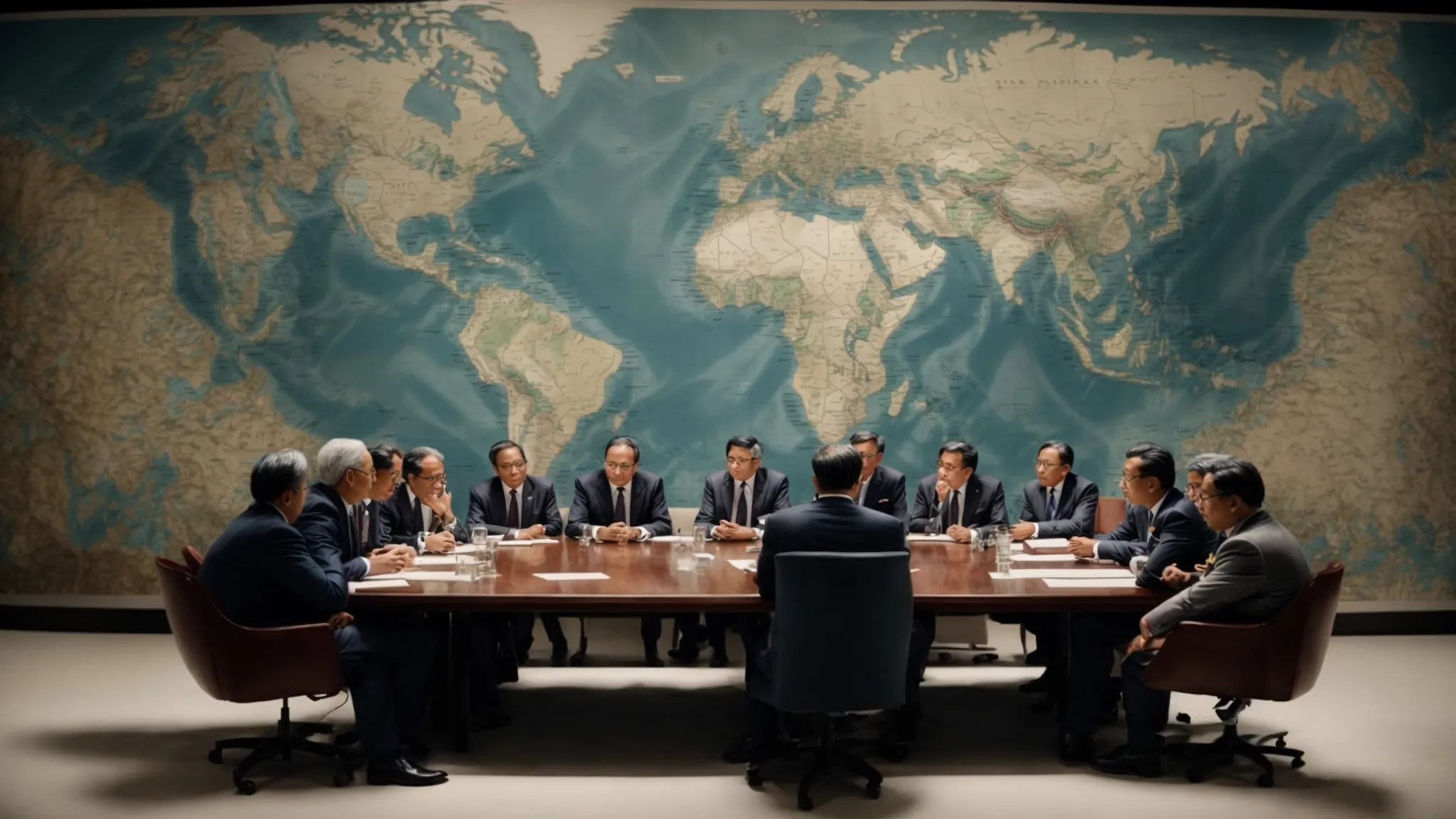In an interconnected world, the intricate web of global trade is often lauded as a catalyst for economic growth, innovation, and international cooperation. Yet, beneath the surface of seamless cross-border commerce lies a persistent and often contentious reality: trade disputes. These disagreements, ranging from disagreements over tariffs and subsidies to intellectual property theft and non-tariff barriers, represent the friction points in the global economic system, capable of disrupting supply chains, escalating diplomatic tensions, and even slowing down global economic progress. Far from being isolated incidents, trade disputes are increasingly intertwined with geopolitical rivalries, domestic political pressures, and the rapid evolution of technology. Understanding their dynamics, the mechanisms for their resolution, and their far-reaching implications is crucial for businesses, policymakers, and consumers alike navigating the complexities of modern international commerce. This article offers an in-depth exploration of global trade disputes, dissecting the key drivers behind their proliferation, the diverse forms they take, the role of international institutions in their resolution, the formidable challenges they pose, and the profound implications for the future of global trade relations.
Why Trade Disputes Emerge

Global trade disputes are not random occurrences; they arise from a complex interplay of economic, political, and strategic factors that create friction between trading partners.
A. Protectionism and Domestic Industry Support
A primary driver of trade disputes is protectionism, where a country implements policies designed to shield its domestic industries from foreign competition. This often takes the form of:
- Tariffs: Taxes imposed on imported goods, making them more expensive and less competitive than domestic products.
- Subsidies: Financial aid or other support provided by governments to domestic industries, giving them an unfair advantage in global markets.
- Quotas: Limits on the quantity of specific goods that can be imported.Such measures are often enacted to protect jobs, national security sectors, or nascent industries, but they can provoke retaliatory measures from trading partners, escalating into disputes.
B. Unfair Trade Practices and Market Distortions
Countries frequently accuse each other of engaging in unfair trade practices that distort market competition. These include:
- Dumping: Exporting goods at prices lower than their production cost or domestic market price to gain market share or eliminate competition.
- Intellectual Property Theft: Unauthorized use, copying, or counterfeiting of patented technologies, copyrighted works, or trademarks.
- Currency Manipulation: Governments artificially devaluing their currency to make their exports cheaper and imports more expensive, gaining an unfair trade advantage.
- Non-Tariff Barriers (NTBs): Subtle, often bureaucratic, measures that restrict trade, such as overly complex customs procedures, discriminatory technical standards, stringent health and safety regulations, or restrictive government procurement policies.
C. Geopolitical Rivalries and National Security Concerns
Trade disputes are increasingly intertwined with geopolitical tensions. Countries may use trade measures as leverage in broader diplomatic or strategic conflicts. National security concerns can also lead to trade restrictions, such as export controls on critical technologies or import bans on goods from rival nations, even if these measures create trade friction.
D. Domestic Political Pressures
Governments are often influenced by domestic political considerations. Lobbying from specific industries, pressure from labor unions concerned about job losses, or public sentiment against certain foreign practices can compel politicians to adopt protectionist measures, even if they risk international disputes.
E. Different Regulatory Standards and Values
Disputes can arise from differing national regulations or societal values. For example, disagreements over:
- Environmental Standards: A country might impose tariffs on goods produced using methods that don’t meet its environmental standards.
- Labor Standards: Concerns about human rights or labor practices in a trading partner’s supply chain can lead to trade restrictions.
- Food Safety and Health Standards: Divergent scientific assessments or risk appetites can lead to bans on certain agricultural products.
F. Technological Competition and Data Sovereignty
The race for technological supremacy is a significant source of trade disputes. Issues include:
- Technology Transfer: Demands for forced technology transfer as a condition for market access.
- Export Controls: Restrictions on the export of critical emerging technologies (e.g., semiconductors, AI components) for national security reasons.
- Data Localization: Requirements that data be stored within a country’s borders, impacting global digital services and data flows.
Diverse Forms of Global Trade Disputes
Trade disputes manifest in various forms, from formal complaints before international bodies to bilateral negotiations and retaliatory measures.
A. World Trade Organization (WTO) Disputes
The WTO provides a formal, rules-based system for resolving trade disputes between its member states.
- Complaint Filing: A member state formally alleges that another member’s trade policy violates WTO rules (e.g., on tariffs, subsidies, anti-dumping).
- Consultations: The first stage, where parties attempt to resolve the dispute through negotiation.
- Panel Proceedings: If consultations fail, a panel of experts is established to hear the case, review evidence, and issue a report.
- Appellate Body (Currently Impaired): Historically, parties could appeal panel rulings to the Appellate Body. However, the Appellate Body has been largely non-functional since 2019 due to blockages in appointments, significantly weakening the WTO’s dispute settlement system.
- Implementation and Retaliation: If a ruling is adopted and the losing party fails to comply, the winning party may be authorized to impose retaliatory trade measures.
B. Bilateral Trade Disputes and Negotiations
Many trade disputes are handled outside the formal WTO system through direct negotiations between two countries.
- Tariff Wars: Imposition of reciprocal tariffs between two nations, as seen in the US-China trade war.
- Diplomatic Pressure: Using diplomatic channels to pressure a trading partner to change policies.
- Retaliatory Measures: Imposing non-tariff barriers, sanctions, or other economic penalties in response to perceived unfair trade practices.
C. Regional Trade Agreement Disputes
Regional trade blocs (e.g., EU, USMCA/NAFTA, ASEAN) often have their own dispute resolution mechanisms, which can be more specific or streamlined than the WTO system. For example, the EU can impose fines on member states for violating trade rules.
D. Investment Treaty Disputes
Foreign investors can bring claims against host governments under bilateral investment treaties (BITs) or free trade agreements (FTAs) if they believe their investments have been unfairly treated. These often use Investor-State Dispute Settlement (ISDS) mechanisms, typically through arbitration.
E. Sanctions and Export Controls
While often driven by foreign policy or national security rather than purely trade reasons, sanctions (economic penalties against a country or entity) and export controls (restrictions on sensitive goods or technologies) frequently act as severe trade disputes. These are usually unilateral or multilateral outside of WTO rules.
The Role of International Institutions in Dispute Resolution

International bodies play a crucial, albeit sometimes challenged, role in mediating and resolving global trade disputes.
A. World Trade Organization (WTO)
As detailed above, the WTO’s Dispute Settlement Body (DSB) is designed to be the primary forum for resolving trade disputes under its agreements. Its rules-based approach aims to provide fairness and predictability. However, the ongoing paralysis of its Appellate Body poses a significant threat to its effectiveness and credibility. Members are exploring alternatives like multi-party interim appeal arrangements (MPIA).
B. International Monetary Fund (IMF) and World Bank
While not directly involved in trade dispute resolution, the IMF and World Bank provide economic analysis, policy advice, and financial assistance that can influence a country’s trade policies and help stabilize economies affected by disputes. They promote open trade systems.
C. United Nations Conference on Trade and Development (UNCTAD)
UNCTAD plays an advocacy and analytical role, promoting sustainable trade and development. It offers a forum for discussions on trade issues, including disputes, and can provide technical assistance to developing countries to navigate trade rules.
D. Regional Economic Blocs and Courts
Organizations like the European Union have their own robust legal and dispute resolution systems (e.g., the Court of Justice of the European Union – CJEU) that adjudicate trade-related disputes between member states or between the EU and other countries, ensuring adherence to the bloc’s internal market rules and external trade agreements.
E. Permanent Court of Arbitration (PCA) and ICSID
These bodies provide institutional support for international arbitration, including investor-state disputes arising from trade and investment treaties. They offer a neutral forum for resolving disputes outside national court systems.
Challenges and Implications of Global Trade Disputes
Global trade disputes pose significant challenges for businesses, economies, and international relations.
A. Economic Uncertainty and Business Disruptions
Trade disputes create uncertainty for businesses, making it difficult to plan investments, manage supply chains, and set pricing strategies. Tariffs and other barriers increase costs for importers and consumers, reduce profits for exporters, and can force companies to re-evaluate their global production networks.
B. Increased Costs for Consumers
Consumers often bear the brunt of trade disputes through higher prices for imported goods, reduced product choice, and potentially lower quality as competition diminishes.
C. Supply Chain Restructuring and Diversification
Companies caught in trade disputes are often forced to diversify their supply chains away from affected countries, which can be costly, time-consuming, and may lead to less efficient production. This trend of “de-risking” or “friend-shoring” impacts global trade patterns.
D. Erosion of Multilateralism and Rules-Based Order
The prevalence of unilateral trade actions and the weakening of the WTO’s dispute settlement mechanism threaten the rules-based multilateral trading system built over decades. This erosion can lead to a more fragmented and unpredictable global trade environment.
E. Escalation of Geopolitical Tensions
Trade disputes can quickly escalate into broader geopolitical conflicts, harming diplomatic relations and potentially spilling over into other areas of international cooperation.
F. Impact on Specific Industries and Sectors
Certain industries (e.g., agriculture, steel, technology) are disproportionately affected by trade disputes, leading to job losses, reduced investment, and long-term structural changes within those sectors.
Future Trajectory of Global Trade Disputes
The dynamics of global trade disputes are constantly evolving, shaped by geopolitical shifts, technological advancements, and the changing nature of the global economy.
A. Shift Towards Plurilateral and Bilateral Agreements
With the WTO’s Appellate Body impaired, countries may increasingly favor plurilateral agreements (among a subset of WTO members) or bilateral trade agreements as mechanisms for setting new trade rules and resolving disputes, potentially further fragmenting the global trading system.
B. Increased Focus on Non-Tariff Barriers and Digital Trade
Future disputes will likely focus less on traditional tariffs and more on complex non-tariff barriers, particularly those related to digital trade (e.g., data localization, digital services taxes, cross-border data flows), cybersecurity requirements, and environmental standards.
C. AI, Emerging Technologies, and IP Protection
The race for supremacy in AI, quantum computing, and biotechnology will likely lead to more disputes over forced technology transfer, intellectual property theft, and export controls on critical emerging technologies. The legal implications of AI-generated IP and virtual assets will also be contentious.
D. Supply Chain Resilience and “Friend-Shoring”
Concerns over supply chain vulnerabilities (exacerbated by pandemics and geopolitical tensions) will drive policies aimed at increasing supply chain resilience, potentially leading to more “friend-shoring” or “near-shoring” and new forms of trade friction.
E. Climate Change and Environmental Trade Measures
As countries implement climate policies, there will be increasing disputes over carbon border adjustment mechanisms (taxes on imports based on their carbon footprint) and other environmental trade measures, raising questions about their compatibility with WTO rules.
F. Human Rights and Labor Standards in Trade
Trade policy will increasingly be used as a tool to promote human rights and labor standards. Disputes will arise from accusations of forced labor, human rights abuses in supply chains, or unfair labor practices, leading to import bans or other trade restrictions.
Conclusion
Global trade disputes are an inherent, though often disruptive, feature of an interconnected world. Driven by a complex interplay of economic protectionism, geopolitical rivalries, technological competition, and domestic pressures, these conflicts pose significant challenges to businesses, economies, and the very fabric of the multilateral trading system. While international institutions strive to provide mechanisms for resolution, the future of global trade disputes suggests continued complexity, shaped by new technologies, evolving geopolitical dynamics, and a potential shift towards more fragmented and bilateral approaches.
The journey through the future of global trade will undoubtedly involve ongoing friction. However, by understanding the insights derived from past and present disputes, and by adopting adaptive and forward-thinking strategies, the international community can strive to manage these conflicts constructively, preserving the benefits of global commerce while fostering a more equitable and stable trading environment for all. The insights from global trade disputes are not just about conflict; they are lessons in cooperation.













